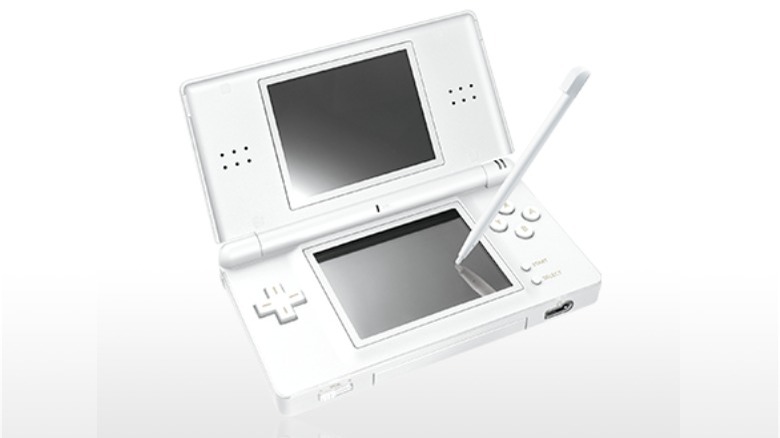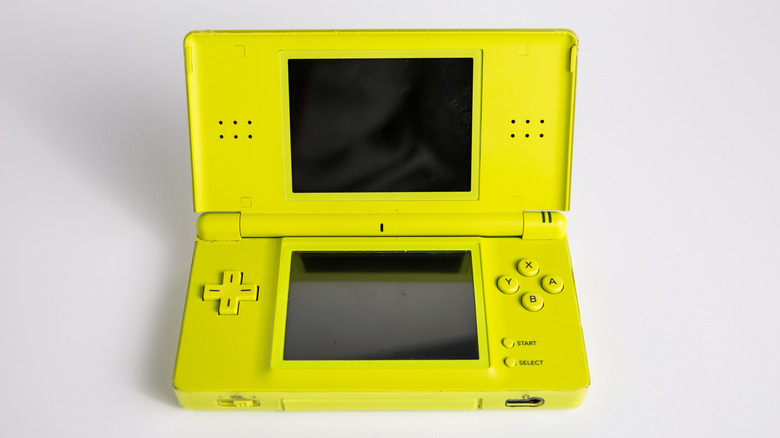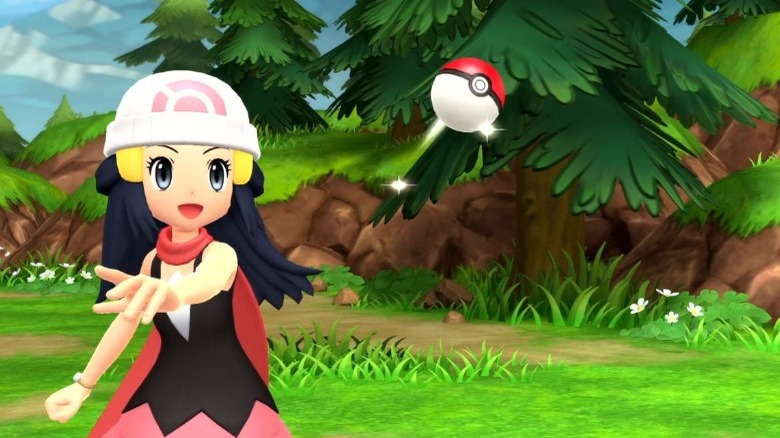Out Of Every Handheld Console, This One Stands Above The Rest
There have been a lot of handheld consoles over the years, each with their own strengths and weaknesses that helped distinguish them at the time of their release. Some have been flops, while others have gone on to redefine how people think about gaming. The Nintendo Switch may be the current reigning champion, having had a great year in 2020. Its dockable, portable design is revolutionary, but it isn't the most popular handheld of all time. That honor goes to another Nintendo console.
The Nintendo DS was released in 2004 with an experimental design originally intended to coexist along with the Gamecube and the Game Boy Advance family of consoles. Its popularity quickly led Nintendo to make it the company's new flagship handheld device. Its folding clamshell design, backlit screen, 3D gameplay, backwards compatibility with Game Boy Advance games, and touchscreen technology in a time when it was still new and cutting-edge all helped set it apart. It was also Nintendo's first handheld console to feature wireless connectivity. A lot of these design elements were presumably inspired by the improvements made in the Game Boy Advance SP, but there are a few ways that it stands out among all the others.
One of the best selling consoles of all time
The Nintendo DS, DS Lite, DSi, and DSi XL collectively make up the best-selling Nintendo console and the second-best-selling console of all time, just barely being outsold by the PlayStation 2. That's quite a feat since the PS2 was the unit that allowed Sony to unseat Nintendo as the best-selling home console maker for the first time in over 30 years. Before that, Nintendo had been on top since the release of the NES back in the '80s.
Things were different in the handheld market, however. Here, Nintendo remained king. Sony was still Nintendo's primary competitor, but the Nintendo DS absolutely blew the PlayStation Portable out of the water in sales. The PSP family is estimated to have sold somewhere around 76 million units (just a little less than the Game Boy Advance family) while the Nintendo DS family sold a whopping 154.02 million consoles. This is significantly more than the second best-selling handheld console family, the Nintendo Game Boy and Game Boy Color, which collectively sold 118.69 million units across its unusually long life cycle and more than double the sales of the Nintendo 3DS which succeeded it.
Upgrades keep the life cycle going
The Nintendo DS had a life span of roughly 10 years. One of the ways that Nintendo kept the momentum going on it was to release several upgrades over the course of that time period, keeping the device feeling consistently new and relevant.
The DS Lite came out just two years after the initial console's release. It improved upon the original by utilizing a slimmer and more lightweight design as well as a brighter screen. The DSi lost the GBA backwards compatibility, but that sacrifice made it thinner, lighter, and brighter than the DS or DS Lite with a screen that was half an inch larger. Then came the DSi XL which featured a 4.2-inch screen, longer battery life, and added the Touch Pen accessory.
This constant innovation kept the DS relevant where other consoles might have fallen into obscurity. It's presumably a big part of the reason that the DS won with over 20% of the vote when Looper conducted a poll of the best handheld game system consoles of all time.
The library makes the console
No matter how technologically advanced or innovative a console might be, it's only as good as the games you can play on it. Lucky for Nintendo, that's one of the areas where the DS stands out the most. There is an argument to be made that the Game Boy Advance and Game Boy Color each respectively featured more first-party games from Nintendo and more relevant "Pokémon” titles than those developed for the DS. Third-party games are a different matter entirely, however. "Castlevania: Dawn of Sorrow” is arguably one of the best "Castlevania" games ever made. The DS also established new series like "Ace Attorney” and new titles like "Professor Layton" which went a long way toward forming the console's identity.
There's also the matter of gaming features that weren't available on previous consoles. Internet connectivity meant activities like online "Pokémon” battles and racing other people in 'Mario Kart" were suddenly possible with people all over the world. It also meant you could play with friends without the addition of accessories like the Game Link Cable. This added new layers of playability that made the Nintendo DS stand out in a way no console had ever done before.




